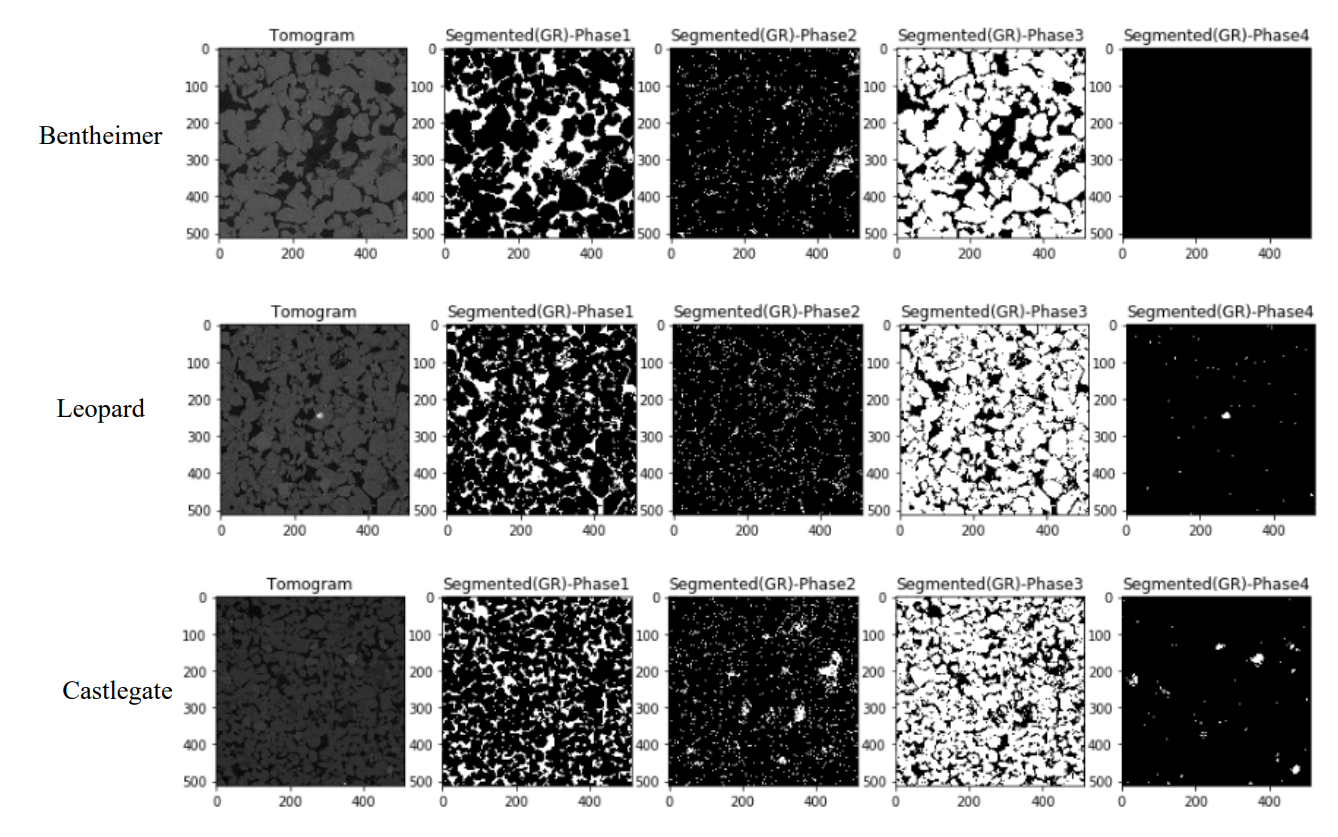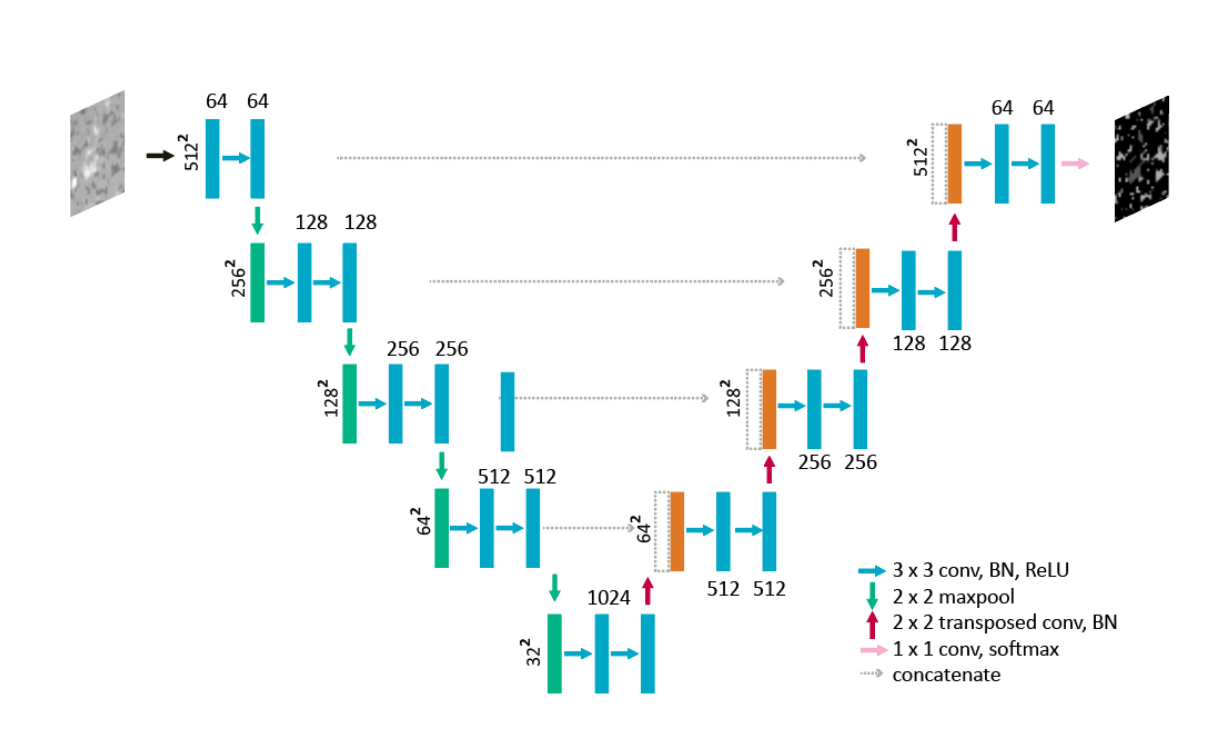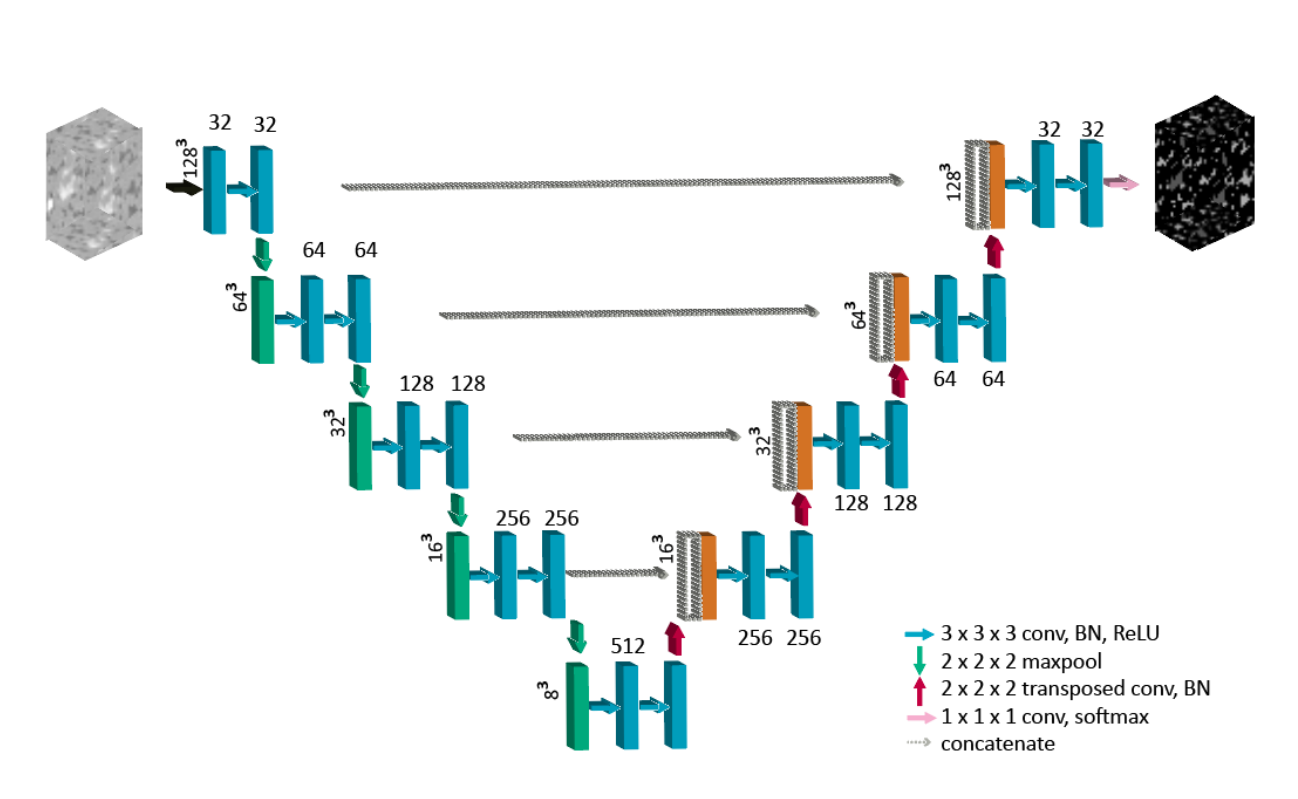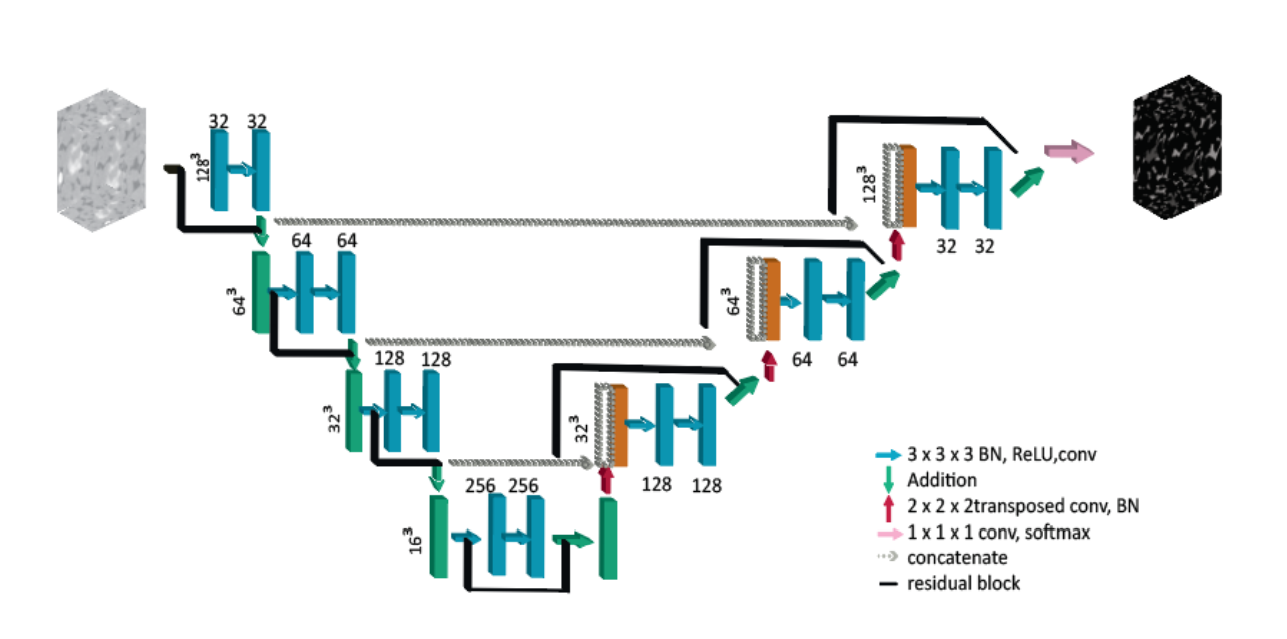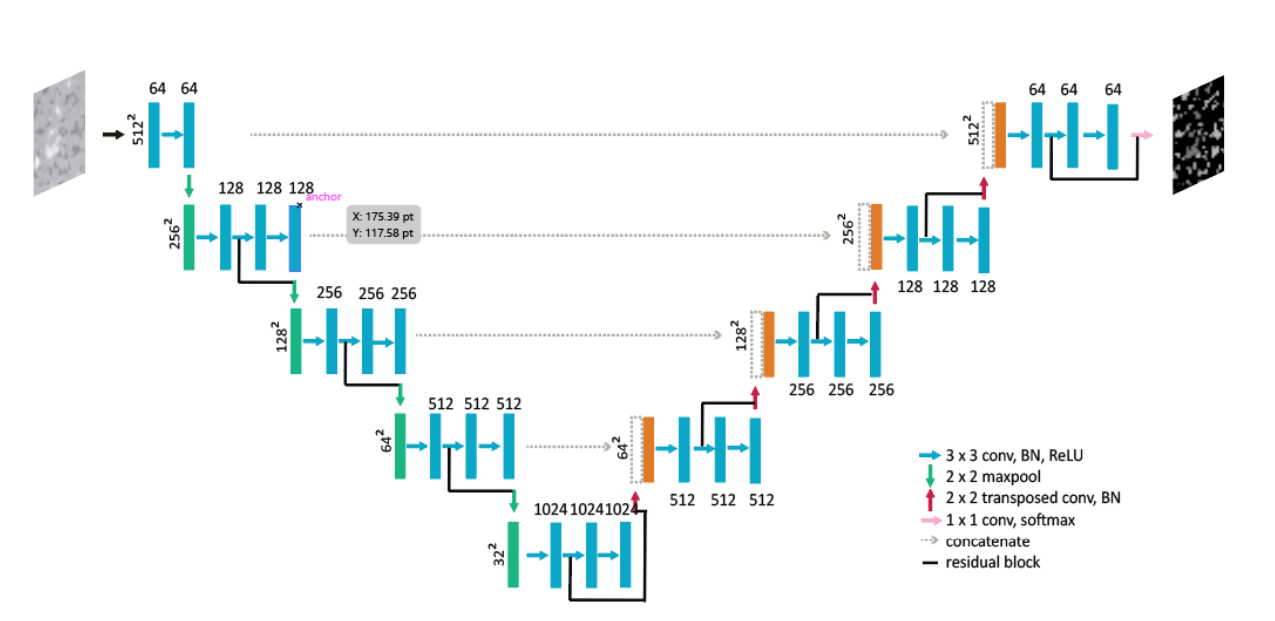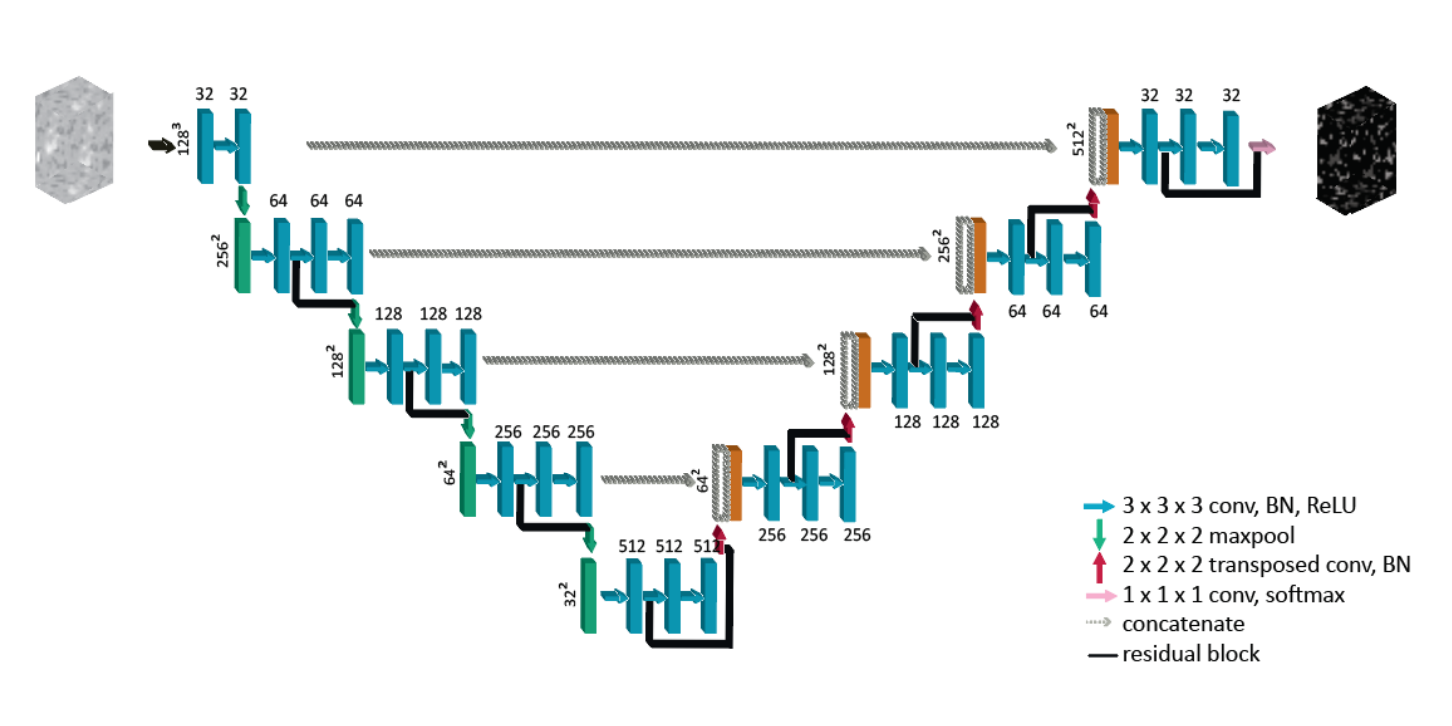In this project, I have built and tested 2D and 3D UNet, U-ResNet, and ResUnet using Keras and Tensorflow implementation in Python and trained with datasets obtained from Professor Christoph Arns. Intersection over union (IOU) was used as a metric to see the performance of each model on each phase of the predicted image. For measuring the physical accuracy of the models, the Euler number for each phase was computed. The 2D UNet, U-ResNet, and ResUNet are trained on 134 million pixels and 3D UNet, U-ResNet and ResUNet are trained on 37 million pixels. Due to parallel computing issues with the Tensorflow package, the image size to train on 3D models was reduced. From multiple tests using different datasets, the models are working with about 99% accuracy on validation dataset with 2D while obtaining reasonable accuracy with 3D due to time and computing constraints.
Advisors: Masa Prodanovic & Christoph Arns
https://ahadmomin.github.io/files/Final%20Report-%20Ahad%20Momin.pdf
This workflow is adapted for segmentation software which will be used for Digital Rock Physics Research. For 3D workflows please request it here. For more datasets, check out: https://www.digitalrocksportal.org/

